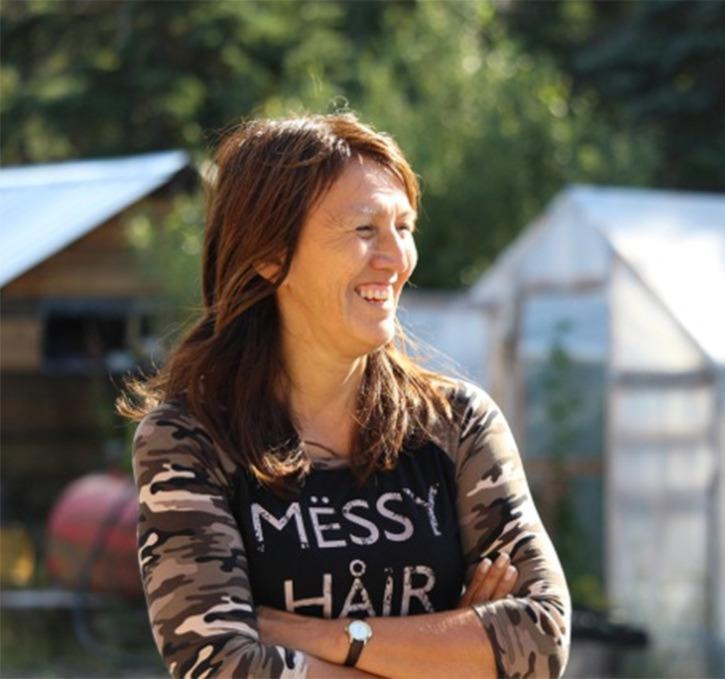Black Press reporter Catherine Matheson recently spent time at the Unist'ot'en camp.
The Unist'ot'en clan of the Wet'suwet'en has a protective camp set up south of Houston to physically stop pipeline proponents such as Coastal GasLink and Chevron from entering their territory.
The camp’s structures and buildings are strategically placed in the pathway of proposed pipeline routes.
The camp runs entirely on donations of food, labour and money. The people attending the camp have travelled from several communities in B.C., including Chetwynd, Kelowna, Vancouver, Richmond and Galiano Island. Some people have travelled from the United States and even Austria.
When you visit the Unist'ot'en camp, you may not get to stay. You will stand at the checkpoint, wait, and then answer questions. If you are unable to state how your visit will benefit the Unist'to'en people, you will probably not receive consent to move forward across the Morice River bridge.
The Unist'ot'en camp's first line of defence in withholding consent is their historical claim on the land. Their second is the 1997 Delgamuukw decision in the Canadian Supreme Court, which was signed by 35 Gitxsan and 13 Wet’suwet’en hereditary chiefs. One of those hereditary chiefs is Kneadebeas.
“Kneadebeas is my head chief,” said Freda Huson, Unist'ot'en camp's spokesperson.
“We are basically monitoring the land,” explained Huson. “That’s been part of our tradition for thousands of years; people had to gain consent."
However, Huson said "most people" are granted permission to access their territory.
"We let berry pickers in and we let people come to fish or camp," she said. "The only reason we have to do things this way is because we have industry landing choppers [in our territory] even though we told them they don’t have our consent; they kept trying to sneak in.”
"This seems like the right thing to be doing," says camp volunteer.
This year, the Unist'to'en camp will be focusing on counter marketing, aiming at the advertising generated by the liquefied natural gas (LNG) industry, according to Freda Huson, Unist'ot'en camp's spokesperson.
“They [industry] are buying a lot of ads and it is effective because a lot of people are saying, ‘Oh, natural gas is safe, it's clean,’ and they are not saying anything about fracking," said Huson's husband Toghestiy.
Toghestiy said the industry should not be referring to the process of natural gas extraction as 'liquefied natural gas' in the first place.
"People are saying, 'Oh, it's just natural gas, we have been using that for 50 years;' Well, no, what they’re doing today is not LNG, it is liquefied 'fracked' gas; it’s completely different."
"They have to inject toxins into the earth to create chemical reactions within shale deposits in order to extract it," he continued. "And this is a concern to us because they are injecting an incredible amount of toxins into the earth; and they are claiming they are pulling [these toxins] back out."
"They’re not saying where they are putting it [the toxins]; nobody’s ever talked about it," he added. "What are they going to do about that, and how are they going to deal with it? That part of it has been muffled by industry and government."
Toghestiy said the Unist'ot'en camp hopes to inspire others to keep the momentum going in their own communities.
“We want people to put together action plans of their own,” he said. “Over the years we have seen a lot of people come back to tell us they’ve begun making changes.”
Crossing the Morice River bridge brings you to the hub of the Unist'ot'en camp.
There you will find a three-story healing centre, which is currently under construction as the second part of a three-phase project.
Two of the people who helped raise money for the project are Dave and Virginia Ages, a retired couple from Galiano Island, one of the Southern Gulf Islands between Vancouver Island and the Lower Mainland.
Dave is now leading the design and construction effort of the healing centre.
“The healing lodge will serve the people who come here to protect the land, and the idea is to also bring struggling indigenous youth to come out here and have good food, have them working restoring forests and give them high-quality counselling," said Dave.
“For me, it’s about stopping pipelines,” he continued. “If you understand the reality of climate change and the need for Canada to transition from fossil fuels to a more environmentally-based economy, it really comes down to pipelines."
"If you build that kind of infrastructure [pipelines], it allows us to continue to use fossil fuels for the next 50 to 100 years," he added. "So of all of the things that I could be doing with the skills I happen to have, this seems like the right thing to be doing."
